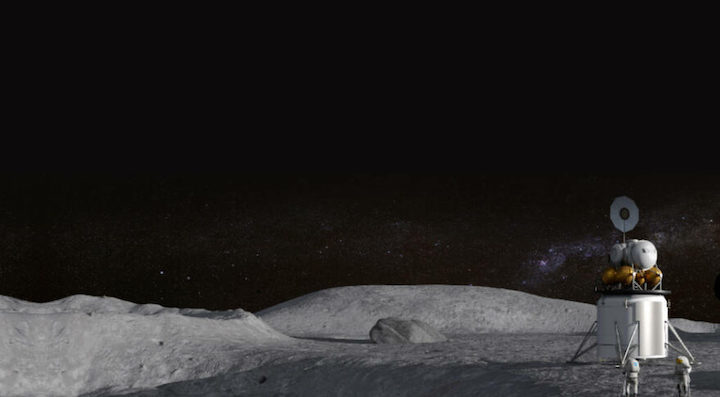5.11.2021

WASHINGTON — Venture investor SpaceFund announced Nov. 3 it plans to finance the development of an autonomous navigation capability for space missions beyond Earth orbit in the region known as cislunar space.
The navigation module is being developed by Rhea Space Activity (RSA), a startup that recently won a U.S. Air Force Small Business Innovation Research (SBIR) contract to design a software tool for monitoring the trajectory of satellites in cislunar space.
Navigation is a central technology needed to access and operate in cislunar space, said Meagan Crawford, co-founder and managing partner of SpaceFund. “We really feel that the future of space and of space traffic management is autonomy and the ability for these spacecraft to know where they are and make decisions in real time without a human in the loop,” she told SpaceNews.
Earth-orbiting satellites rely on the Global Positioning System constellation to know where they are and how to navigate to a destination. There is no comparable navigation system beyond Earth orbit so it can be difficult for spacecraft in cislunar space to identify their exact position.
Crawford said the technology that RSA is developing has both commercial and military applications which makes it attractive to investors.
“We definitely look at cislunar as the strategic high ground,” she said. “I think it’s pretty well understood that America needs to control that strategic high ground so that commerce can flourish.”
A spacecraft in cislunar space today must perform two-way ranging with a ground station on Earth to determine its location, said RSA founder Shawn Usman. “This is an expensive process that must be calculated in complex, ever-changing gravitational environments.”
The company’s navigation system is called Jervis Autonomous Module (JAM) and is designed to work without GPS or ranging with ground stations, said Usman. The module was named after British Major Thomas Best Jervis, an engineer who led the establishment of the U.K. Department of Topography and Statistics in 1855.
“Satellites equipped with JAM can operate autonomously for months in a radio-silent manner in a region of space that is currently unmonitored,” said Usman.
RSA plans to offer the module as a commercial product and also intends to deploy JAM on its own cislunar surveillance satellite projected to launch in 2024 called JERVIS-1. SpaceFund will help finance this mission, a 12U cubesat projected to cost about $20 million, including launch.
JERVIS-1 is envisioned as the first of a future constellation of autonomous cislunar surveillance satellites. RSA and Purdue University researchers identified a resonant retrograde orbit where the satellites could be deployed to track objects in both cislunar space and the geostationary belt.
Usman said the JAM module will use optical sensors, for example, to look at geostationary satellites and will be able to calculate its position in space based on the position of those geostationary satellites. “It uses a variety of triangulation techniques once it’s observed a fixed number of geostationary satellites to derive its position in the orbit. And that’s a really innovative, elegant solution that does not require communicating back with Earth.”
Quelle: SN
